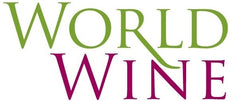Our location
We are located in the heart of Melbourne and stock a range of specialty wines.
We also have access to more than 5000 fine wines from around the world through our local supplier network. Sometimes a vintage changes, or our suppliers sell out of stock without us yet being able to push through a timely update on our website.
If you would like to confirm stock levels before placing your order, please contact us here. Alternatively, if products are unavailable you will be informed in a reasonable time and we will process a refund/replacement for you.
Philip Togni Vineyard Cabernet Sauvignon 2018
A 5% discount has already been
applied to this option.
Philip Togni Vineyard Cabernet Sauvignon 2018 - 1 Bottle is backordered and will ship as soon as it is back in stock.
Free Delivery Orders over $250*
Or $9.95 flat fee Australia wide.
Dispatched from our Melbourne store.
Couldn't load pickup availability
Vintage Vigilant
Vintage Vigilant
We aim to have all wines above $30 be vintage specific. In the case the listed vintage is out of stock and you note you would like that particular vintage, we will inform you via email for approval to go ahead.
Seen it Cheaper?
Seen it Cheaper?
We strive to offer the best prices on over 5000 wines. If you've seen this product cheaper elsewhere, please message our dedicated price match service line to see if we can do you a better deal.
Delivery Times
Delivery Times
To be able to supply such a unique & extensive range of boutique wines, we don't hold much of the inventory. So with us, there is the added step of receiving the wine from our local suppliers before it is dispatched to you. Most orders are dispatched within 3-6 working days.
Returns and Warranty
Returns and Warranty
Replacement or refund offered if bottles are faulty or damaged. All our deliveries are insured against loss, however you must notify us in a reasonable amount of time.
-
 Red Wine
Red Wine
-
 White Wine
White Wine
-
 Rosé Wine
Rosé Wine
-
 Champagne & Sparkling
Champagne & Sparkling
-
 Dessert, Sherry & Port
Dessert, Sherry & Port
 France
France Italy
Italy Spain
Spain Australia
Australia New-Zealand
New-Zealand Germany
Germany Austria
Austria Portugal
Portugal South-Africa
South-Africa Greece
Greece USA
USA
-
 Wine GiftA great wine gift.
Wine GiftA great wine gift. -
 Green WineA wine made using sustainable, organic and/or biodynamic practices in
the vineyard and the winery.
Green WineA wine made using sustainable, organic and/or biodynamic practices in
the vineyard and the winery. -
 CollectibleA wine that will improve and possibly increase in value with
careful cellaring.
CollectibleA wine that will improve and possibly increase in value with
careful cellaring. -
 BoutiqueA wine from a small, artisanal winery.
BoutiqueA wine from a small, artisanal winery. -
 Screw CapNo corkscrew required to open.
Screw CapNo corkscrew required to open. -
 Magnum1500ml bottle.
Magnum1500ml bottle.
- TWFThe Wine Front
- JHJames Halliday
- WWWorld Wine
- WSWine Spectator
- WEWine Enthusiast
- BHAllen Meadows
- JSJames Suckling
- DEDecanter
- JRJancis Robinson
- STStephen Tanzer
- AGAntonio Galloni/Vinous
- RPRobert Parker/Wine Advocate
- HHHuon Hooke
The Philip Togni estate vineyard is in the Spring Mountain District AVA, just northwest of the town of St. Helena on the western side of the Napa Valley. Sitting on the eastern slope of the Mayacamas Range, it’s the coolest and wettest region in the valley, partly due to its proximity to the Pacific Ocean (50 kilometres) and San Pablo Bay (40 kilometres). Conditions on Spring Mountain are further moderated by aspect and altitude; most of the region’s vineyards face east, avoiding the harsh afternoon sun, and the steep terrain can reach as high as 800 metres.
The east-facing, organic, dry-farmed 10-hectare Togni plot lies high up on the mountain itself, above the fog line at just over 600 metres. Surrounded by oak trees and tall Douglas Firs, the site was first planted in 1981 to Cabernet Sauvignon and Sauvignon Blanc. Following a conversation with friend and Bordeaux legend Paul Pontallier, Togni decided to mirror the varietal plantings of Château Margaux at his own estate. The plantings now stand at 82% Cabernet Sauvignon and 15% Merlot, with the balance comprising Cabernet Franc (2%) and Petit Verdot (1%). The make-up of the wines reflects these plantings. It’s a steeply terraced site, home to old vines (33 years on average) in rocky soils of weathered sandstone and shale.
Philip Togni Cabernet Sauvignon is made from estate fruit―the family has never purchased fruit, nor will they. “We know our site is special,” daughter Lisa explains. “We’re trying to make a wine that reflects this place.” In another tip of the cap to Bordeaux, Philip Togni’s preference from the outset has been to make wines more in the mould of Saint-Estèphe rather than Saint-Julien; in each given season, he and Lisa seek to emulate the longevity, rugged character and definition found in those wines. “That’s what we set out to do, and with a few tweaks, it seems as if that’s what we have achieved.”
The 2018 season was a classic at this estate, producing elegant, detailed, site-true wines. The fruit was picked in the third week of September with potential alcohol between 13 and 14%. The grapes were sorted, gently destemmed, crushed, and cold soaked for three days. After 20 days’ co-fermenting, the wine was pressed to French oak (40% new Taransaud and Nadalie). The wine was bottled in August 2020.
| Type | Red Wine |
|---|---|
| Varietal(s) | Cabernet Sauvignon |
| Country | United States |
| Region | California |
| Appellation | Napa Valley |
| Brand | Philip Togni |
| Vintage | 2018 |




